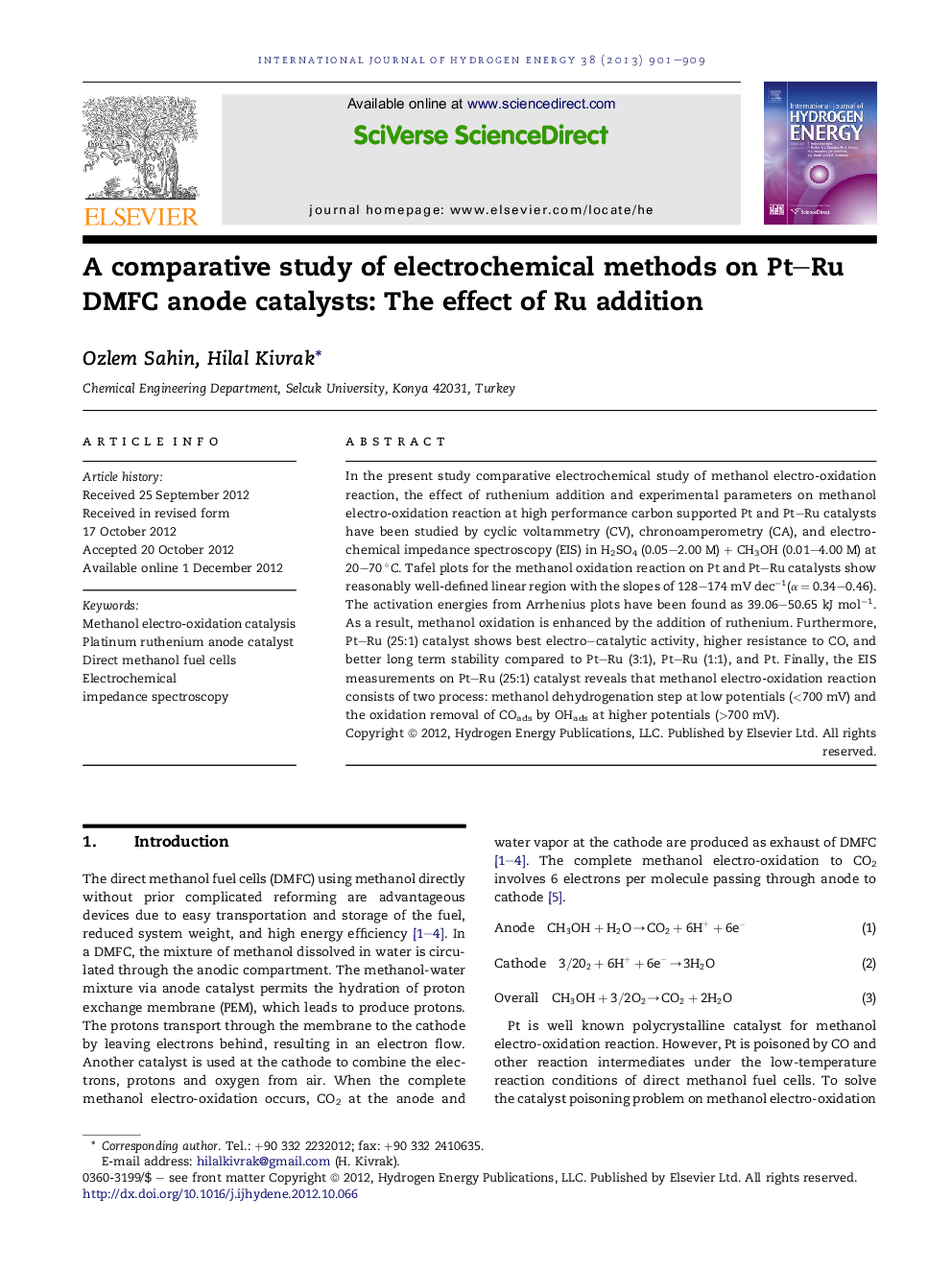| Article ID | Journal | Published Year | Pages | File Type |
|---|---|---|---|---|
| 1282056 | International Journal of Hydrogen Energy | 2013 | 9 Pages |
In the present study comparative electrochemical study of methanol electro-oxidation reaction, the effect of ruthenium addition and experimental parameters on methanol electro-oxidation reaction at high performance carbon supported Pt and Pt–Ru catalysts have been studied by cyclic voltammetry (CV), chronoamperometry (CA), and electrochemical impedance spectroscopy (EIS) in H2SO4 (0.05–2.00 M) + CH3OH (0.01–4.00 M) at 20–70 °C. Tafel plots for the methanol oxidation reaction on Pt and Pt–Ru catalysts show reasonably well-defined linear region with the slopes of 128–174 mV dec−1(α = 0.34–0.46). The activation energies from Arrhenius plots have been found as 39.06–50.65 kJ mol−1. As a result, methanol oxidation is enhanced by the addition of ruthenium. Furthermore, Pt–Ru (25:1) catalyst shows best electro–catalytic activity, higher resistance to CO, and better long term stability compared to Pt–Ru (3:1), Pt–Ru (1:1), and Pt. Finally, the EIS measurements on Pt–Ru (25:1) catalyst reveals that methanol electro-oxidation reaction consists of two process: methanol dehydrogenation step at low potentials (<700 mV) and the oxidation removal of COads by OHads at higher potentials (>700 mV).
► Ru addition improves methanol electrooxidation reaction. ► Pt–Ru(25:1)/C presents the best methanol electrooxidation activity and CO resistance. ► Impedance spectrum reveals that methanol dehydrogenation occurs at low potentials. ► The COads species removes from the surface by the OHads at high potentials.
